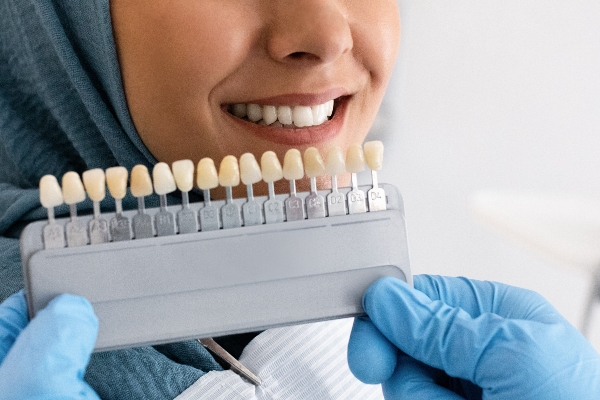 Dental veneers are quick dental restorations that can renew your smile. Each shell can add another layer of protection to every tooth. Knowing the steps of getting these restorations can help you prepare for your appointments. Here are the details of the process of getting dental veneers.
Dental veneers are quick dental restorations that can renew your smile. Each shell can add another layer of protection to every tooth. Knowing the steps of getting these restorations can help you prepare for your appointments. Here are the details of the process of getting dental veneers.
The consultation
The dentist will decide if the patient is a good candidate for this treatment. Once the patient is set, the consultation will begin. Taking dental impressions and X-rays will be part of this first visit. The dentist may sit with the patient to discuss the treatment goals. A mock-up will show the patient what the possible results will be like. The dentist will answer any questions that the patient may have.
The procedure
Removing a thin layer of enamel from the target teeth will come first. Doing so will create enough space for the veneers to attach to. Some types of veneers do not need dental preparation. But permanent ones will need careful preparation.
The dentist will then take dental impressions again. The lab will use the impressions in the lab for creating the dental veneers. Some clinics have 3D mapping technology and printing technology. This enables the patient to get the veneers by the end of the appointment.
Temporary dental veneers can protect the patient’s smile while the lab creates permanent shells. Once the permanent veneers are ready, the patient will return to the clinic. The dentist will roughen the front surface of the teeth first with a type of acidic gel. This will make the bond between the shells and the dental surfaces stronger.
Cementing the custom-fit shells to the patient’s teeth will come next. A curing light will harden the cement and fix the shells to the treated teeth. This will happen in minutes. The set of dental veneers will then be part of the teeth.
Getting the new look
There is no recovery time for getting dental veneers. The patient may feel temperature sensitivity after attaching the shells. Even so, the patient will be ready to show off a new smile. Proper care and maintenance will allow the individual to have veneers for at least 10 years.
Benefits of dental veneers
Dental veneers need very little removal of the enamel. This allows the patient to retain a healthy dental structure while having veneers. Shaving off a thin layer of enamel is necessary so that the shells may fit well. This process is non-invasive, so most patients do not need anesthetics. But some dentists apply a local anesthetic. This ensures that the patient will not feel any discomfort.
These restorations can renew the appearance and function of teeth. Each shell can cover minor cracks and chips. It can even close mild to moderate dental gaps. If the teeth have severe staining, the dentist can suggest dental veneers to cover and whiten the teeth.
Dental veneers also feel and look natural because they attach to the teeth well. This allows the patient to feel better about smiling and socializing with others. These restorations are often stain-resistant. Brushing right after snacks and meals can remove surface stains.
The dentist can answer more questions about the process of getting dental veneers
You must be prepared to ask your dentist relevant questions about dental veneers. Knowing the steps can help you understand what will happen during your appointments. Preparing well for this treatment can remove any misconceptions. Working with your dentist can make your dental veneer experience pleasant and satisfying.
Request an appointment or call Integrity Family Dental at 303-242-8872 for an appointment in our Denver office.
Related Posts
Dental veneers have become an increasingly popular choice for patients looking to improve the appearance of their smiles. A veneer can enhance the color and shape of your teeth, providing a more uniform and aesthetically pleasing smile. However, they are not a one-size-fits-all solution; certain factors determine whether someone is a good candidate. Patients should…
Dental veneers help patients achieve a picture-perfect smile. However, these wafer-thin shells go over the natural teeth, which begs the question: Are dental veneers comfortable? When installed correctly, veneers feel just like your real teeth. In this article, we will explore veneers, how they work, and how they manage to feel and look natural.Veneers help…
Dental veneers can improve your dental health. Your dentist can present many types of this dental restoration. Understanding the types of veneers available can broaden your options. Here are the different types of dental veneers that you must consider.These are the most common types of dental veneers. The material in these restorations is feldspar, which…
